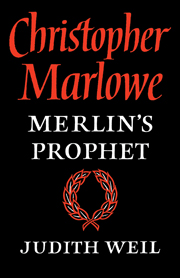Book contents
7 - The difference of things in Edward II
Published online by Cambridge University Press: 05 November 2011
Summary
Edward II presents a hero whose destruction can evoke our strong sympathy. It thereby reverses the pattern of response which occurs in the two Tamburlaine plays. We may observe with some detachment the stylized sequence of anarchies and outrages in Acts I and II. Edward, Gaveston, and the barons fall far short of Tamburlaine's heroic grandeur. They behave with as much conceit as Faustus does, and with far less plausibility. Yet from their noisy brawls will grow Marlowe's most powerful and tragic play. It engages characters and audience in a process which finally drives the hero into the grip of the dilemma Tamburlaine could evade by ‘conceiving and subduring both’ – by imposing his imagination upon his experience.
Deaf to the ‘sun-bright’ Virgins of Damascus with their pleas for mercy, Tamburlaine defined this dilemma as a conflict between the warrior's honour and his instinctive desire for beauty. Edward II suggests that such conflicts may arise whenever a powerful man extends and reduces his own strong identity through pity or friendship or love. Unlike Tamburlaine, Edward cannot avoid the problem. After the whirlwind confusion of the play's first four Acts, Act v slows to accommodate the patient deliberation of the King's torturers. Through his protracted agony, Edward acquires more awareness of his own identity than do Marlowe's other heroes. The audience which attends to his suffering may see beyond Edward towards an order which makes his suffering significant.
Information
- Type
- Chapter
- Information
- Christopher MarloweMerlin's Prophet, pp. 143 - 169Publisher: Cambridge University PressPrint publication year: 1977
